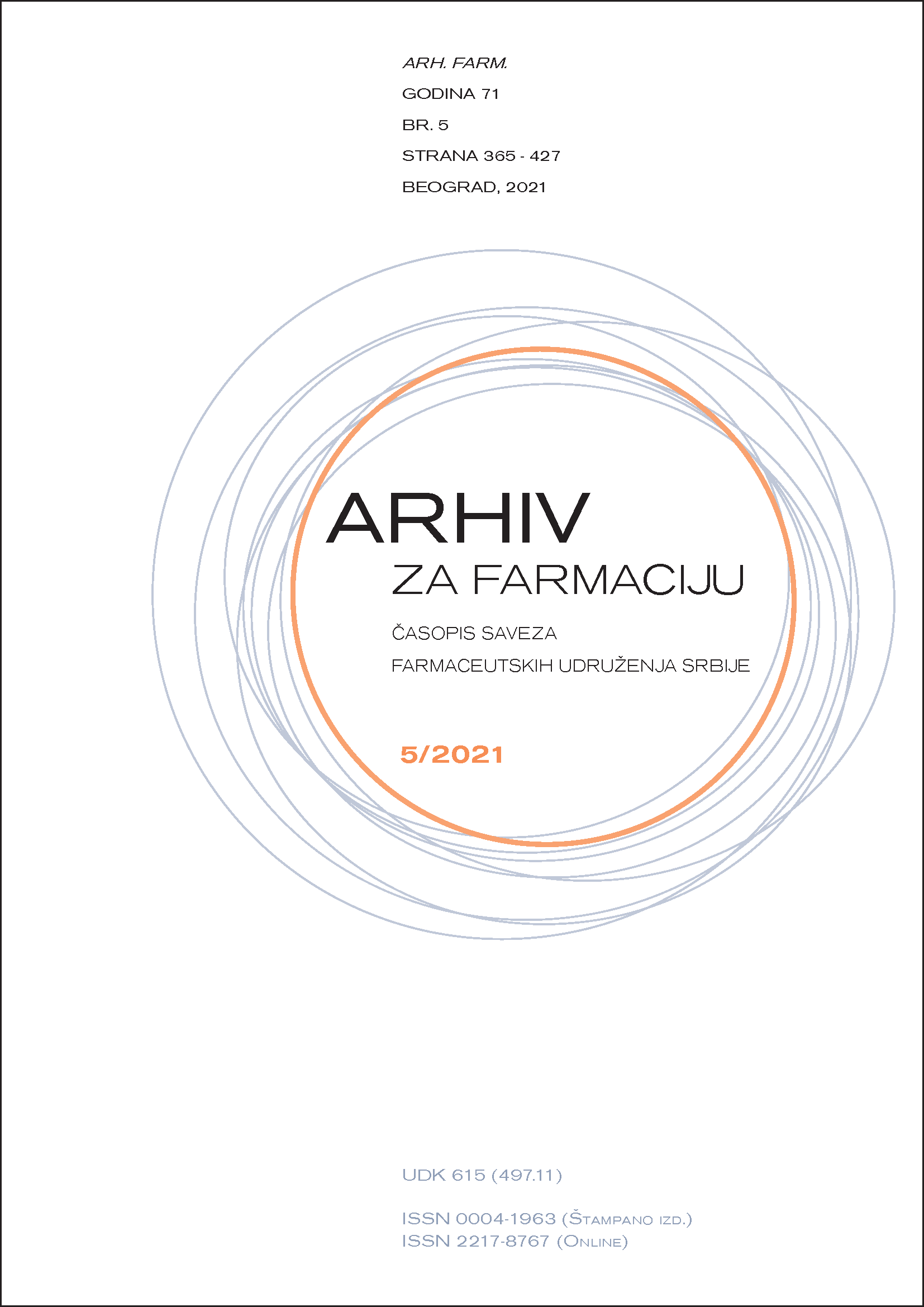PDA-CAD method for the determination of magnesium, pyridoxine and thiamine in a dietary supplement supported by analytical quality by design methodology
Abstract
In this research, Analytical Quality by Design (AQbD) methodology was used to develop the HILIC-PDA-CAD method for the determination of magnesium, pyridoxine and thiamine content in a dietary supplement. Experiments were conducted on the Dionex Ulitimate 3000 HPLC system with PDA and CAD detectors. Separations were performed on the ZIC-HILIC PEEK column (100 × 4.6 mm, 5 μm) with a mixture of acetonitrile, acetone and ammonium acetate/ammonium formate aqueous solution (48:12:40, v/v/v) as the mobile phase. The detection was performed at 220 nm. The optimal settings of CAD were defined with the one-factor-at-a-time approach: evaporation temperature 50°C, filter constant 10 s, pressure gas 60 psi. The influence of qualitative (salt type) and quantitative factors (pH and salt concentration) on the magnesium retention factor, kMg and the selectivity factor between pyridoxine and chloride anion, αB6/Cl-, was tested using the I-optimal design. The design space was defined by Monte Carlo simulations and model coefficients’ errors were propagated with the aim of identifying the conditions that meet the following criteria: kMg<4 and αB6/Cl->3.5, with the probability π=95%. From the derived 2D-Design Space graph, 95 mM of ammonium formate pH 4.4 was selected as the optimal composition of the aqueous phase. The method was validated and its reliability in routine application was confirmed.
References
1. FDA 101: Dietary Supplements [Internet] [cited 2019 March 2]. Available from: https://www.fda.gov/consumers/consumer-updates/fda-101-dietary-supplements.
2. Food safety law, The Official Gazette of the Republic of Serbia, 41/2009 and 17/2019.
3. Rules on the health suitability of dietary products, The Official Gazette of the Republic of Serbia, 45/2010, 27/2011, 50/2012, 21/2015, 75/2015, 7/2017 and 103/2018.
4. Magnezijum-375-plus-b6-kapsule-a100 [Internet] [cited 2019 march 2]. Available from: https://www.apotekanet.rs/magnezijum-375-plus-b6-kapsule-a100 .
5. Magdalena L, Sylwia S, Aleš H, Bogusław B. Corona-Charged Aerosol Detection: An Analytical Approach. CritReviews Anal.Chem. 2013;43 (2):64-78.
6. Cobb Z, Shaw P. N, Lloyd LL, Wrench N, Barrett D. Evaporative Light-Scattering Detection Coupled to Microcolumn Liquid Chromatography for the Analysis of Underivatized Amino Acids: Sensitivity, Linearity of Response and Comparisons with UV Absorbance Detection. J. Microcolumn. 2001;13:169–175.
7. Moreau RA. The Analysis of Lipids via HPLC with a Charged Aerosol Detector. Lipids J. 2006;41(7):727–734.
8. Vervoort, N, Daemen, D, Torok G. Performance Evaluation of Evaporative Light Scattering Detection and Charged Aerosol Detection in Reversed Phase Liquid Chromatography. J. Chromatogr. A. 2008;1189:92–100.
9. Buszewski B, Noga S. Hydrophilic interaction liquid chromatography (HILIC) – a powerful separation technique. Anal Bioanal Chem. 2012;402:231–247.
10. Alpert AJ. Hydrophilic-interaction chromatography for the separation of peptides, nucleic acids and other polar compounds. J Chromatogr A. 1990;499:177–196.
11. Rozet E, Lebrun P, Debrus B, Boulanger B, Hubert P. Design spaces for analytical methods. Trends Anal. Chem. 2013;42,157–167.
12. Ramalingam P, Kalva B,Yiragamreddy PR. Analytical Quality by Design: A Tool for Regulatory Flexibility and Robust Analytics, International Journal of Anal. Chem. doi: 10.1155/2015/868727.
13. Dijetetski-proizvodi [Internet]. Ministarstvo zdravlja [cited 2019 March 6]. Available from: https://www.zdravlje.gov.rs/tekst/345415/dijetetski-proizvodi.php .
14. Crowther JB, In: Ahuja S, Scypinski S, editors. Validation of pharmaceutical test methods Handbook of modern pharmaceutical analysis. New York: Academic Press; 2001; p. 415–443.
15. International Conference on Harmonisation of Technical Requirements for Registration of Pharmaceuticals for Human Use – ICH. Validation of Analytical Procedures: Text and Methodology Q2 (R1). 4th version. 2015.

